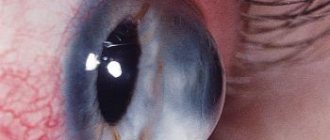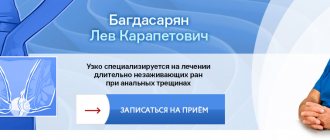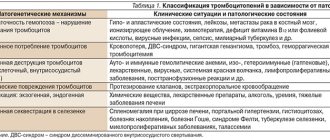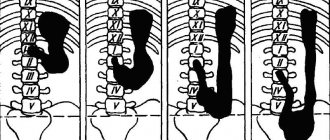Local therapist
Serebryakova
Oksana Evgenievna
Experience 27 years
Local therapist, candidate of medical sciences, member of the Russian Scientific Medical Society of Therapists
Make an appointment
Scurvy is a pathology from the group of vitamin deficiencies that develops against the background of vitamin C deficiency in the human body. Primary signs of the disease include bleeding gums, dry skin, hemorrhages in the joint cavity, and loosening of teeth. Confirmation of the diagnosis by a doctor is carried out after examination, history taking and radiography.
Symptoms of scurvy
Symptoms characteristic of scurvy are as follows:
- formation of hemorrhagic rash (various intensity of hemorrhage on the skin);
- bleeding gums;
- teeth begin to become loose (possibly even falling out);
- pain in the limbs, joints;
- frequent bleeding (nasal, from the oral mucosa);
- general weakness;
- fast fatiguability;
- decreased immunity;
- severe swelling.
At a late stage of the disease, the following are possible:
- bone fractures;
- blood in the stool;
- sharp pain in the abdomen;
- gangrenous gingivitis (death of gum tissue);
- hemorrhages in internal organs.
With a lack of vitamin C, symptoms begin to appear after 4-6 months. In the complete absence of vitamin C, clinical signs appear after 1-3 months.
If you experience similar symptoms, consult your doctor
. It is easier to prevent a disease than to deal with the consequences.
Symptoms
Symptoms of scurvy are varied and depend on the form in which the disease occurs in a particular patient. Weakness and fatigue are the first signs of ascorbic acid deficiency in the human body. Against this background, the strength of capillary collagen decreases - multiple foci of hemorrhages are formed in the joints, muscles, and subcutaneous tissue. In the articular tissues affected by hemarthrosis, intense pain develops and hemorrhagic exudate accumulates.
Against the background of a deficiency of vitamin C derivatives, the level of iron-containing enzymes decreases. A person’s gastronomic preferences change, and the need for spicy food arises. The nail plates become thinner, the hair becomes brittle and dull. Anemia develops, accompanied by dizziness and tachycardia.
The depressed state of the patient's immunity leads to the development of viral and bacterial infections. The cyclicity of the adrenal medulla changes, and signs of persistent arterial hypotension appear. Significant changes occur in the oral cavity: the mucous membrane becomes covered with small ulcers, the gums bleed, and the fixation of teeth in the upper and lower jaws weakens.
Are you experiencing symptoms of scurvy?
Only a doctor can accurately diagnose the disease. Don't delay your consultation - call
Prevention
For the disease “scurvy,” prevention includes:
- rational and balanced diet (regular consumption of foods high in fiber (vegetables, fruits) and vitamin C (fresh vegetables and fruits, especially citrus fruits));
- taking medications containing vitamin C (the dosage and duration of administration are prescribed by the doctor).
This article is posted for educational purposes only and does not constitute scientific material or professional medical advice.
Reasons for the development of the disease
Ascorbic acid ensures the implementation of many biochemical processes. The endocrine glands are not capable of producing this substance. The compound enters the human body with food and is absorbed in the duodenum. Acid reserves are created in the thyroid gland and the adrenal medulla, the total volume is 1500 mg. The causes of scurvy may be malabsorption of vitamin C or insufficient intake due to a poor diet.
The absorption of ascorbic acid can be hindered by:
- changes in the structure of the intestinal epithelium;
- acute pancreatitis;
- prolonged diarrhea.
The diet that a patient follows can play a significant role in the manifestation of symptoms of scurvy. The daily intake of vitamin C should be at least 70 mg for adults and 30 mg for children. Ascorbic acid deficiency leads to the development of pathology within 4-12 weeks.
Flow
The evolution of scurvy is usually expressed in the following three periods:
• The period of onset of the disease, during which symptoms of depression and weakening predominate. During this period, the gums appear slightly swollen. Towards the end, the skin is often covered with hemorrhagic spots.
• Stationary period, which is characterized by significant changes in the gums, superficial and deep hemorrhages, and a general scurvy condition.
• A period of complications in which all symptoms worsen and hemorrhages occur in all organs. Septic and putrefactive phenomena develop. The usual outcome of illness that reaches this period is death.
Most often, scurvy stops before reaching the third period, which in this case is replaced by a period of recovery, slowly leading to a cure.
Recovery always takes a very long time. Absorption of blood effusions occurs gradually, and ulcerations heal very slowly. The recovery period is often interrupted by the return of the disease.
The duration of scurvy cannot be determined with precision. In subjects with mild scurvy, the duration of the illness cannot exceed several weeks. However, even in some mild cases, the illness can last several months. Then its symptoms are even less pronounced. Patients experience little noticeable swelling of the gums and, from time to time, mild bouts of hemorrhage. General symptoms are often so mild that the patient does not need to stay in bed.
When scurvy appears in severe form, it usually develops within 2-3 months. The third period begins no earlier than a month and a half or two from the onset of the disease.
Recovery is the most common outcome of the disease. Death, which is the outcome of some severe cases, usually occurs during cachexia. It is sometimes sudden, caused by fainting. Sometimes death may depend on some complication.
Risk factors
Despite the fact that scurvy is quite rare in recent years, there is a risk of developing the disease in the following population groups:
- Infants who are fed only cow's milk or plant-based drinks (almond milk) during the first year of life.
- Elderly people living alone (as a rule, many people over 70 years of age do not pay enough attention to their nutrition and are prone to a monotonous diet)
- Cigarette smokers: These individuals require increased intake of vitamin C due to lower absorption and increased catabolism.
- Pregnant and lactating women, as well as those who suffer from thyrotoxicosis: these people require an increased intake of vitamin C.
- People with anorexia nervosa or anorexia from other diseases such as AIDS or cancer.
- People with type 1 diabetes have increased vitamin C requirements, as do those on hemodialysis and peritoneal dialysis.
- People with small intestinal diseases such as Crohn's, Whipple's and celiac disease, and after gastric bypass surgery, because vitamin C is absorbed in the small intestine.
Story
These days, many people don’t even know what scurvy is. And doctors easily diagnose and treat this disease. However, scurvy used to be a real curse of sailors. So, in 1870, out of 12,000 crew members of the British fleet, 1,500 died from it. Sailors at that time ate croutons, pickles, dried meat and fish, products that simply did not contain ascorbic acid. Doctors treated patients with bloodletting, vinegar, hydrochloric acid, and mercury. Thus, they only aggravated the well-being of people suffering from scurvy.
All this led to an epidemic of scurvy in the 17th and 18th centuries. Over the course of the disease, millions of people have died from it. The solution was found only at the end of the 19th century by the famous doctor Gilbert Brain. He found out that scurvy is a viral disease, and also, as an experiment, introduced lemons into the diet of sailors, which immediately reduced the mortality rate from the disease by half.
Rose hip decoction
Take a handful of dried rose hips, pour 0.5 liters of boiling water and leave to brew for 10 minutes. To do this, you need to choose a container with a tight-fitting lid. After which the broth must be poured into a decanter or jar and allowed to brew for 6 hours. To get rid of leaves and peel, strain the broth through a sieve. If desired, you can add honey or sugar to the broth. Take half a glass 3 times a day before meals. The broth should be stored in a cool place for no more than 3 days.
Therapy
Treatment methods are determined by the clinical picture observed in the patient. In mild cases of pathology, a person undergoes outpatient treatment under the supervision of a nutritionist. Moderate and severe degrees require hospitalization and bed rest.
Dietary therapy remains the main non-drug treatment. The doctor calculates the daily calorie content of food consumed by the patient. The gender, age and occupation of the child or adult are taken into account. The diet includes foods that serve as a source of vitamin C - leafy vegetables, red fruits, citrus fruits. The maximum amount of ascorbic acid is contained in dry rose hips: up to 1200 mg in every 0.1 kg of weight.
Moderate to severe scurvy requires drug therapy. During it, metabolic processes are corrected, the main symptoms of the disease and emergency conditions are relieved. Etiotropic treatment is aimed at eliminating gastrointestinal pathologies. The patient receives enzymes (pancreatin, enzymes of non-animal origin). Additionally, ascorbic acid is prescribed (orally or parenterally).
Symptomatic treatment is aimed at stopping bleeding. Doctors use potassium chloride or tranexamic acid. In the event of significant blood loss, plasma or red blood cell transfusions are performed.
Infusion of black currant berries
As noted above, black currant also has a high content of vitamin C. 100 grams of berries contain 200 mg. The infusion recipe is very simple. Take 2 tablespoons of dried berries and pour two glasses of boiling water over them. Leave the drink to brew for 1 hour. After which the product is ready for use.
Also, dried currant twigs and leaves can be added to tea leaves and consumed with black tea.
It is absolutely known that the most important role in the prevention of ascorbic acid hypovitaminosis is played by a proper diet. It is also necessary to engage in educational activities, especially in marginalized sections of the population. Promoting a healthy lifestyle is an integral part of preventing this disease. Dietitians should educate the population on rational nutrition and advise on the correct choice of a particular diet. Elimination of various types of pathologies of the gastrointestinal tract, antiseptic treatment of foci of infection, and administration of vitamins to people at risk are the most important aspects that prevent the development of a disease such as scurvy.
Pathological anatomy
Almost all organs can have areas of hemorrhage. With the exception of such hemorrhages, internal organ damage does not present anything specific.
The spleen, usually normal, sometimes appears swollen, blurry and dotted with hemorrhagic foci.
The liver is sometimes enlarged in volume and has a fatty appearance. Its cells may be filled with fat. Foci of pneumonia or necrosis were observed in the lungs.
Serous cavities often contain serous or bloody effusions.
The heart often appears altered. Its tissue is flabby and soft. The walls of the heart appear relaxed. The normal red color of the heart muscle is replaced by a grayish color, the color of a dried leaf, which is associated with damage to the muscle fibers. Microscopic examination shows that most of the fibers are changed and they contain numerous fatty and pigment granules. The heart valves are normal.
Muscle fibers very often present with deep lesions. These lesions most often depend on hemorrhages in the muscles. Most fibers are atrophied; some of them are made with grains of fat.
Complications
Complications of scurvy are numerous. Recovery may be incomplete, and then the disease leaves behind incurable disorders. This happens when gum lesions are deep and widespread. Then the mucous membrane cannot completely transform, the gums remain bare.
Scorbutic ulcers are, especially in some cases, ugly scars that significantly impede movement. A certain number of patients retain this difficulty in movement, depending on the contraction of the tendons and stiffness of the joints.
Persistent muscle atrophy and more or less extensive areas of anesthesia may be observed.
When people are overcrowded, when other epidemic diseases (typhoid, dysentery, cholera, malaria) are already rampant, scurvy has especially severe forms.
Among the complications that may arise during the normal course of the disease, the most important and most frequent are the following: bronchopneumonia, pulmonary embolism, very extensive necrosis of the lungs, almost constant in some epidemics. Complications from the lungs develop without affecting the general condition, almost undetected by sharp signs. The same applies to exudative pleurisy observed during the course of scurvy.
With scurvy, simple or hemorrhagic pericarditis with a rapid course may occur. Myocarditis occurs frequently in all forms of the disease.
Bones are also the site of complications. Caries and necrosis are sometimes observed following deep ulcerations. Most often, after the jaws, the bones of the extremities are affected, especially the bones of the hand and foot.
The visual apparatus is subject to a curious lesion known as night blindness. Other eye complications (blepharitis, conjunctivitis, iritis, keratitis) are nothing specific.
During the recovery period, profuse rashes of boils or ecthyma pustules are often observed.
Diagnostic measures
The clinical manifestations of the pathology are specific, which simplifies the diagnosis. The patient is examined by a gastroenterologist. The doctor interviews the person and takes an anamnesis. Changes in the condition of the skin, oral mucosa, teeth, joints, nails, and hair are recorded.
The absence of obvious reasons for vitamin C deficiency in the human body becomes an indication for instrumental diagnostics. If signs of hepatitis or pancreatitis are detected, an ultrasound examination of the abdominal cavity is performed. Hemorrhages into the serous cavities are recorded using radiography.
Analysis of the patient's biomaterials in the laboratory allows us to confirm the preliminary diagnosis. In controversial cases, plasma ascorbic acid concentrations are screened.
Diagnostics
Photo: bbva.com
Diagnosis begins with a conversation between the doctor and the patient. The complaints and the time of their occurrence are specified. The first symptoms of the disease, manifested by severe general weakness, increased fatigue and decreased ability to work, are often ignored. However, with a detailed survey it is still possible to trace the time of their occurrence. It is important to clarify whether there were different types of bleeding and the frequency of their occurrence. After the interview, the doctor begins the examination. On the body of a person suffering from scurvy, a hemorrhagic rash is detected, which can be located absolutely on any part of the body, but in large quantities it can be found on the extensor surfaces of the joints. When examining the oral cavity, attention is paid to the condition of the mucous membrane and gums. Scurvy gingivitis, which is characterized by redness and swelling of the gums, is often noted. It is not uncommon to find loose teeth or teeth falling out. Vitamin C deficiency leads to a decrease in immunity, so people with this problem often talk about frequent colds that have overtaken them lately.
The detection of the listed signs indicates the possibility of a person having vitamin C deficiency. Therefore, to confirm his suspicions, the doctor questions the patient in detail about his diet (frequency of meals, variety of foods consumed, amount of fruits and vegetables eaten daily).
The appointment of general laboratory tests provides an assessment of the severity of metabolic disorders in the body. If internal bleeding is suspected, diagnostic methods are prescribed to allow visualization of the organ required for study.
Laboratory research
Laboratory tests help distinguish scurvy from diseases with similar symptoms, determine the presence of concomitant pathologies and determine their severity. A blood test for vitamin C concentration is necessary to make a diagnosis. Large percentages of red blood cells will be detected in feces and urine. On an x-ray of the joints, the doctor will see the different stages of osteoporosis.
Scurvy has a number of serious complications, so timely qualified diagnosis with the correct staging plays an important role.








